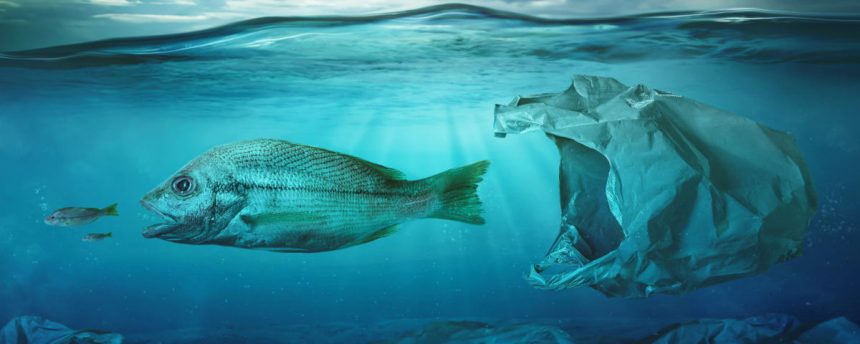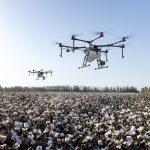Water pollution is referred to as water bodies that are contaminated, usually due to human activities reducing their utility. Water bodies refers to seas, rivers, lakes, aquifers and reservoirs. This pollution results from the mixing of hazardous materials with these water bodies.
What Are The Sources Of Water Pollution?
Water pollutants are classified into two major sources which include:
point source and non-point sources
Point Sources:
1. Industrial facilities (chemicals, heavy metals)
Industrial facilities are a broad range of structures and operations that support modern economies. These comprise the manufacturing hubs for various sectors such as automotive, chemical, pharmaceutical among others. Industrial facilities vary in size from large factories to specialized plants having complex machines, sophisticated technology and strict safety procedures. They are thus centers of innovation and supply chains as well as provide employment opportunities. However their operations also have environmental and health impacts making them require careful regulation and sustainable practices. They shape communities across the globe; hence they form an important component of global economic infrastructure.
2. Sewage treatment plants (bacteria, nutrients)
Sewage treatment plants employ physical, chemical and biological processes for removal of contaminants or pollutants from wastewater obtained from domestic , industrial or commercial sources before it’s discharged into the environment . It involves screening out objects in sewage that are large , primary settling-out solids , secondary removing organic matter , tertiary further purification may be applied where necessary . Additional treatments may be needed if there is the desire to remove pathogens or nutrients.
The significance of Sewage Treatment Plants lies in disease prevention through public health measures by avoiding waterborne diseases caused by pollutants present in water bodies and preserve ecosystems by reducing pollution levels in water systems (USEPA 1). The treated effluent can be used for irrigation agriculture or even industrial applications like cooling towers while some countries use it for potable purposes also. However efficient operations of sewage treatment plants require proper maintenance regimes’, infrastructure investments and adherence to regulatory standards.
3. Oil refineries and pipelines (oil spills)
Oil refineries and pipelines are the backbone of global energy infrastructure that processes, transports and distributes crude oil as well as petroleum products. Refineries are industrial plants where crude oil goes through different processes such as distillation, cracking or treatment to produce various valuable end-products like gasoline, diesel or aviation fuel. They are usually structurally complex containing refining, storing’ and distributing units.
On the other hand, pipelines refer to huge connected systems of pipes that convey crude oil, refined products as well as natural gas over long distances; helping in moving energy resources from production sites to refineries, distribution centers and consumers.
However these important parts of the world economy also have environmental hazards including spillage accidents that release oil into water sources , releasing airborne pollution through flaring operations , damaging habitats etc., therefore they must be strictly regulated with respect to their safety and sustainability for which monitoring technologies should be developed.
4. Agricultural facilities (animal waste, fertilizers)
The backbone of the world’s energy infrastructure is made up of oil refineries and pipelines which facilitate the processing, transportation and distribution of crude oil and petroleum products. Refineries are industrial plants where raw oil undergoes diverse treatments such as fractional distillation, cracking and purification to produce several valuable outputs like petrol, diesel and jet fuel. These facilities are usually elaborate with units for refining, storing and dispensing.
On the other hand, pipelines are large networks of connected pipes used in transporting crude oil, refined products as well as natural gas over long distances. They play a crucial role in delivering energy resources from production sites to refineries, distribution centers and end-users.
Oil refineries and pipelines are essential elements in the global economy but they also pose environmental threats like oil spills, air pollution or loss of habitats. Consequently, ensuring safe operation with sustainability implies that there must be strong regulatory oversight along with maintenance practices backed by technology investing for monitoring as well as mitigation.
5. Mining activities (heavy metals, acid mine drainage)
Mining activities refer to various operations aimed at obtaining valuable minerals/metals/resources from crustal rocks on our Earth surface. Such processes include open pit mining underground mining as well as in-situ leaching each accompanied by its own set of techniques along with environmental impacts. Surface mining involves removing above rock layers plus soil so that mineral deposits can be reached whereas tunneling into earth to get resources from deeper deposits constitutes underground mining. In-situ mining means extracting minerals without lifting off the overlaying material through leaching methods or solution mining techniques mostly.
It supplies raw materials required by different sectors like construction; manufacturing; energy among others. However it face major challenges including habitat degradation; soil erosion; water contamination or loss of biodiversity. As such responsible mining practices that include monitoring environment degradation efforts reclamation attempts alongside sustainable resource management should be adopted to mitigate these effects Furthermore regulatory frameworks community participation forms necessary ingredients required to strike balance between advantages of mining and its environmental and social costs.
1. Agricultural runoff (fertilizers, pesticides, manure)
Agricultural runoff is the movement of water carrying pollutants like fertilizers, pesticides and sediment from agricultural lands into adjoining waters systems. Such runoff occurs when there is rain or irrigation that flows over land surface grabbing contaminants and transporting them to streams, rivers, lakes as well as oceans.
The contaminants in agricultural runoffs harms aquatic life and affects water quality. Algal blooms caused by too much nitrogen or phosphorous leads to oxygen depletion which harms organisms living in water bodies. Pesticides can be toxic to aquatic life forms hence interfering with food chains as well as entire ecosystems. In addition, sediment erosion clouds waters limiting light penetration and hampering the growth of aquatic plants.
For example best management practices such as buffer strips; conservation tillage; cover crops would be implemented to reduce soil erosion together with runoff thus mitigating the impacts associated with agricultural run off. Besides that regulatory policies intended for controlling farm activities coupled with sustainable agricultural techniques are therefore necessary for preventing contamination in water systems while preserving aquatics’ habitats.
2. Urban runoff (stormwater, vehicle emissions)
Urban runoff, sometimes called stormwater runoff, is the term used to describe the flow of rainwater and melted snow over surfaces like roads, sidewalks and rooftops in cities. As it flows urban runoff collects various pollutants including oil, grease, heavy metals, pesticides and litter. It then discharges into storm drains before ending up in water bodies like rivers, lakes and oceans.
The presence of such contaminants can have adverse effects on water quality as well as ecosystems. Excess nutrients from fertilizers can cause algal blooms that lead to oxygen depletion thereby killing aquatic life. Heavy metals and toxic chemicals can build up in sediments with implications on human health as well as wildlife. Moreover urban runoff can worsen flooding and erosion thus causing more damage to infrastructure while at the same time leading to habitat loss in these places.
To manage urban run-off effectively a range of storm-water facilities are implemented including green infrastructures such as rain gardens, pervious pavements and retention ponds which capture and treat run-off prior reaching water bodies. Furthermore public awareness initiatives along with regulatory provisions plus community involvement are key towards responsible management of storm-water hence conservation of waters within urban centers.
3) Construction activities (sediment, debris)
Construction activities refer to many tasks involved in building construction projects planning, design or execution along with infrastructure development as well as land development. These include site clearance; excavation; foundation installation; construction of structures including plumbing works; electrical wiring systems; landscaping among others. They vary greatly from small residential developments through large-scale commercial complexes to infrastructural undertakings like roads, bridges or dams.
Despite playing a crucial part towards economic expansion together with urbanization; construction also brings about environmental coupled with social challenges. Among such problems include destruction of habitats by way of constructions activities thus soil erosion is ensued together with air/noise pollution moments afterwards traffic congestion follow suit accordingly too much traffic movement has led intrusion by vehicles into natural zones additionally poor management of these sites has increased the risk of pollution.
This has seen the gradual mounting of sustainable construction practices like green building design, waste reduction and erosion control measures. Besides, regulatory frameworks together with environmental assessments and community engagement are crucial in ensuring responsible and environmentally friendly construction activities within the surrounding ecosystems as well as communities.
4) Natural sources (animal waste, decaying plant matter)
Natural sources refer to a wide range of elements, processes and phenomena that emanate from the earth’s natural environment. They comprise renewable resources like sunlight, wind, water, biomass etc., which provide energy for both ecosystems and human societies. In addition,minerals rocks soil formations from part of natural sources that shape physical landscape as well as supporting life diversity.
From breathing air to eating foodstuffs we consume or making items used in various aspects of life; natural sources constitute fundamental components for survival on earth by human beings. They form the basis of economic activities such as agriculture, forestry mining among others while at the same time playing an enormous role in providing vital ecosystem services such as pollination water purification climate control et cetera.
It is therefore necessary to conserve and manage sustainably our natural sources for their wise use both now and future generations. Conservation actions have to be implemented towards this cause, developing renewable forms of energy plus resource management that is responsible thereby protecting these invaluable assets for upcoming generations.
5- Atmospheric deposition (acid rain, airborne pollutants)
Atmospheric deposition is the process through which particles and chemicals from the atmosphere are transferred or deposited on the Earth’s surface. These particles can originate naturally from sources like dust, volcanic eruptions, and wildfires which then result in human activities such as industry discharge, transportations and farming.
As a result, it plays an important role in nutrient cycling and ecosystem dynamics, introducing important nutrients like nitrogen and phosphorus to terrestrial and aquatic environments. However, it can also be responsible for depositing harmful pollutants that include heavy metals; acidic compounds and persistent organic pollutants which have negative effects on human health together with the environment.
Pollutant deposition may cause contamination of soil and water systems leading to ecosystem degradation, loss of biodiversity among other negative impacts. Further still, atmospheric deposition may lead to occurrences such as acid rain along with eutrophication thereby compounding environmental problems.
Reviving these are interdisciplinary endeavors involving the study of atmospheric science as well as ecology coupled with environmental management which monitor plus mitigate for atmospheric depositions. A strategy could involve reducing pollutant emissions, implementing land use practices that minimize exposure or even restoring damaged ecosystems so as to mitigate against its impacts on human wellness or ecological systems.
Types Of Water Pollution
Water pollution comes in many forms including:
Chemical Pollution: This occurs when rivers become contaminated by toxic chemicals such as pesticides or heavy metals as well as industrial waste resulting in harm to aquatic life or human health; Microbiological pollution: this refers to water that has been infected by bacteria and viruses among other microorganisms that cause diseases; Physical Pollution: Aquatic ecosystems are often destroyed through water temperature changes among others physical properties caused by siltation ; Nutrient pollution : Excess phosphorous or nitrogen causes blooms of harmful algae in waters thus depleting oxygen content while Organic pollution – organic substances for instance sewage plus agricultural runoff may cause hypoxia whereas Radioactive Pollution – radioactive materials carried by water pose health risks Tropical pollution affects fish species in relation to changes that occur in the temperature of water and Plastic pollution is a grave issue concerning marine life via waterways penetrating food chains. Industrial pollutants include chemicals, heavy metals and other harmful substances which are released into water by factories ; Agricultural pollutants are fertilizers, pesticides and animal droppings from farms.
Effects of Water Pollution
Water pollution has devastating effects on environment, human health and economy. These may involve:
1. Human Health Problems: Contaminated waters whether they are toxic or bacterial infected often result in cancers, digestive disorders or skin diseases being caused thereby.
2. Marine Life Extinction: These waters when polluted usually lead to extinction of aquatic plants and animals thus disrupting an ecosystem or even breaking a food chain.
3. Environmental Damage: Ecosystems get degraded once polluting waters contaminate soils, air or even surface as well as ground water.
4. Economic Impacts: Losses emanating from contaminated waters encompass loss of jobs, damage to infrastructure plus decrease in property values.
5.Recreational And Aesthetic Impacts: This reduces the aesthetic value of water bodies making them unsuitable for swimming among other recreational activities.
6.Increased Water Treatment Costs: Treatments processes have been increasing due to increased costs of cleaning up polluted waters.
7.Food Chain Disruption: Coastal seafood is not fit for human consumption because these kinds of contaminants get into fish that people eat.
Climate Change : Greenhouse gas release can be a result of which it diminishes the ability of ecosystems to absorb carbon dioxide.
It is imperative that sustainable practices, laws and individual actions are put in place to conserve our irreplaceable fresh water resources against pollution by chemicals.
Precautions Against Water Pollution
Methods of prevention of water pollution are:
1.Appropriate disposal of waste: Industrial together with home wastes should be properly disposed off using recommended methods by the concerned authorities
2. Eco-Friendly products: Select those things that can decompose and have little packaging.
3. Conservation of water: Use less water so as to reduce wastewater production.
4. Sewage disposal: Ensure all sewage has undergone treatment before being released into any water body.
5. Regular tests: When sampling, check for elements like phosphates, nitrates or ammonia that might indicate an existence of pollutants.
6. Protection of Water Sources: Not directly disposing garbage into rivers, lakes and oceans.
7. Education and Awareness Creation Programs: These programs aim at teaching people how to prevent water pollution today.
8. Policies and Regulations Implementation: Urban areas must have strict legislation on protecting their sources of water from any contamination.
9. Use Alternative Energy Sources: By depending less on fossil fuels we can minimize oil spills and other forms of pollutions
10. Supporting Organizations Fighting Against Water Pollution: Team up with bodies committed to stopping water pollution
Every small action counts – every individual effort could help in preventing water pollution!










